Category Archives for "Engineering"

Phase is important to a great drum sound, but often overlooked. That’s why some drum recordings just don’t sound right, and no amount of processing can make them sound better. Here’s an excerpt for the 4th edition of my Mixing Engineer’s Handbook that outlines 5 easy steps to getting those drum mics in-phase. The chances […]
Continue reading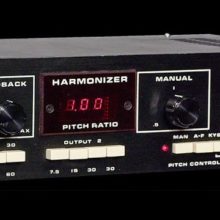
Depending upon how much of a purist you are, pitch correction is either the worst thing to ever happen or a godsend. Regardless of how you come down on the issue, it’s at the very least a necessary evil in today’s music. Here are 5 tips from the 4th edition of my Mixing Engineer’s Handbook that […]
Continue reading
When it comes to a live drum sound during a tracking session, sometimes the smallest details can make a big difference when you consider that there are usually multiple mics involved. Changing one thing can sometimes make a difference, but sometimes it’s the fact that many small adjustments have a cumulative effective on the overall sound. […]
Continue reading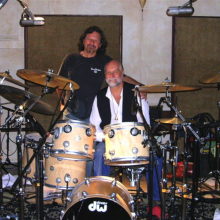
If you’re doing a session in Los Angeles and you want your drums to instantly sound great, then your first call is to the Drum Doctors to either rent a fantastic sounding kit, or have your kit tuned. Ross Garfield is the Drum Doctor and you’ve heard his drum sounds on platinum recordings from Bruce […]
Continue reading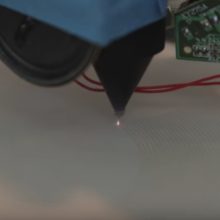
OK, this is rather nutty but fun. If you have a powerful laser and too much time on your hands, you too can burn music onto virtually anything. To prove it, William Osman uses his laser for good instead of evil as he burns music onto a taco, a piece of cardboard, and finally onto an […]
Continue reading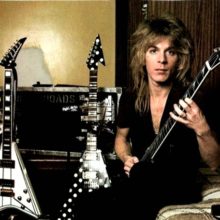
There are few guitar players that you can truly say are influential, but Randy Rhoads is certainly one of them. His playing on Ozzy Osbourne’s initial solo album set the guitar world on fire, and for many metal players, it’s still the bar that everyone aims for. When “Crazy Train” exploded onto the radio guitar players […]
Continue reading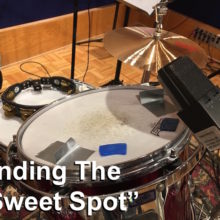
Mic placement may be the most important part of recording since a change of half-an-inch can sometimes make a huge difference in the sound. Finding that correct placement isn’t always easy though, so here’s an excerpt from my Recording Engineer’s Handbook 4th edition to give you some easy tips to find that “sweet spot” quickly. “Quickly finding […]
Continue reading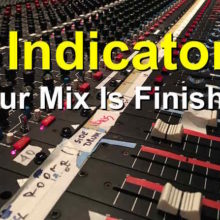
One of the hardest things for many mixers to determine is when a mix is finished. In fact, engineers new to mixing may think a mix is ready in an hour, but a pro will usually take considerably longer. How much longer? Well, some big hit maker mixers that I know may spend up to 16 hours […]
Continue reading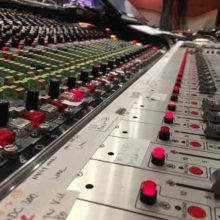
When it comes to EQing, there are certain frequencies that seem predominant for every instrument. Many call them the magic frequencies, because they do tend to work most of the time. Here’s a chart of those frequencies from the latest edition of my Mixing Engineer’s Handbook. Remember that using the magic frequencies might make an […]
Continue reading
Perhaps the greatest detriment to a session running smoothly is the inability for players to hear themselves comfortably in the headphones. This is one reason why veteran engineers spend so much time and attention on the cue mix and the phones themselves. In fact, a sure sign of an inexperienced engineer is treating the headphone […]
Continue reading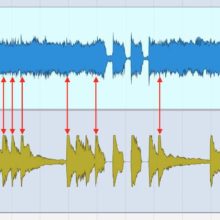
Here’s a great distorted guitar recording tip that I got from Richard Chycki, engineer for Rush, Dream Theater, Aerosmith and many more. I liked it so much I’ve used it on every session since, and included it in the latest version of my Recording Engineer’s Handbook as well. Distorted electric guitar is notoriously difficult to edit, […]
Continue reading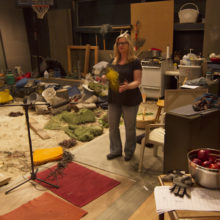
Most people (even many audio engineers) don’t realize that the sound effects that they hear in a movie aren’t real. They’re recreated to sound more dramatic or “more real” than they actually sound. That’s the job of the Foley artist, and there aren’t many of them, even in Hollywood. The process is named after Jack […]
Continue reading
In the list of iconic recording studios, Music Shoals Sound Studio is right up there with the most famous. During its heyday of the 70s, the studio hosted a wide array of artists that produced dozens of hit records, including Aretha Franklin, Cher, Boz Scaggs, The Rolling Stones, the Staple Singers, Bob Seger, Traffic, Willie Nelson, Rod Stewart, […]
Continue reading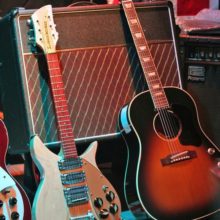
If you ever wanted to record some of those authentic Beatles guitar sounds but didn’t know how to go about getting them, then this is the video for you. It uses only modern gear and relies mostly on pedal combinations. Granted, the amp is a Vox AC30 and the guitars and bass are modern versions […]
Continue reading
Sometimes synth bass tracks are a real bear to get to fit into the mix, but add a real bass to that and many mixers will be pulling their hair out before they make it work. That’s because a synth can have way more low end than a bass and it’s not always easy to […]
Continue reading